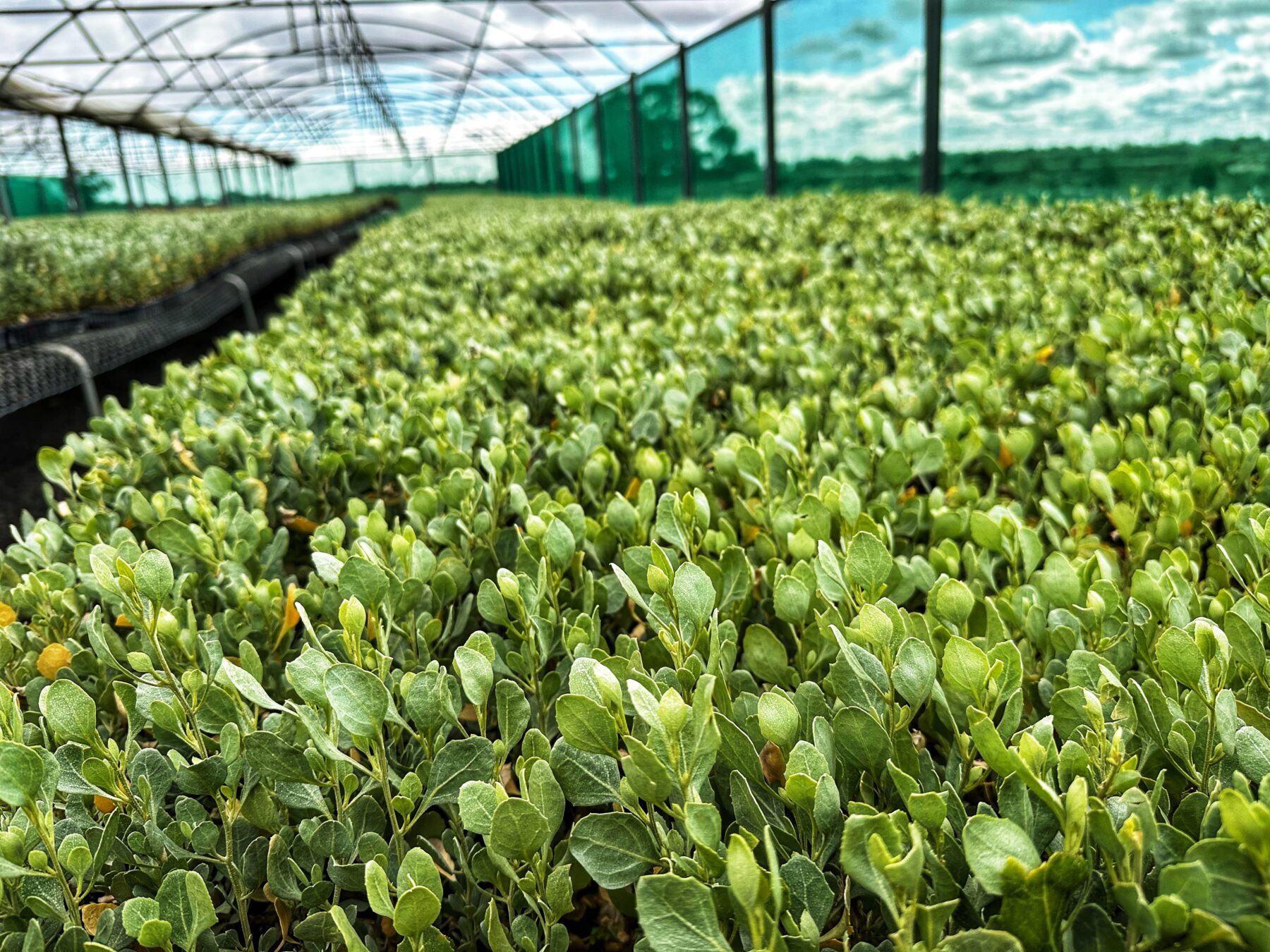Pass the saltbush: Farmers go native ahead of El Niño

Merino farmer Marcus Hooke has been busy.
This week he has been planting Anameka saltbush, a drought-tolerant native shrub that can regenerate marginal land and offer a supplementary food supply for his flock in southern NSW.
The farmer has doubled the amount of shrubs he has planted since he successfully reintroduced it to his land last year.
Not only does the native help feed his 15,000 ewes, it also provides shelter for those that are lambing.
He’s one of hundreds of farmers who have introduced six million plants of the saltbush variety since it was commercially released.
The sheep farmer said planting the bush was helping him prepare for drought ahead of the likely return of drier El Niño conditions later this year.
“When I heard about it, it just really made sense that it would take in this country – it’s originally native to this area,” Marcus said.
Anameka is a type of old-man saltbush.

Standard saltbushes had been found to have poor energy values, so a team at Australian science agency CSIRO undertook years of research to develop the ideal plant.
It was chosen from 60,000 plant specimens for its high nutritional value and palatability for livestock.
During trials in the paddock, it was sheep that honed in on the variety, choosing Anameka over other saltbush varieties.
CSIRO agricultural scientist Hayley Norman said it was thought to be the first time globally that livestock had been used to select a better forage plant.
“We were looking for plants that had higher energy values, higher relative palatability so animals wanted to eat them, and good biomass production and good survival,” she said.
CSIRO modelling indicates the Anameka shrub offers 20 per cent higher economic returns compared to standard saltbushes, particularly in relatively dry years.
The shrub also has the potential to regenerate the topsoil of land that is too saline or infertile.
CSIRO is now producing a million shrubs a year that are commercially available to farmers.
Graham Bonnet, who leads the science agency’s drought resilience mission, said the saltbush provides another feed option for farmers in dry years.
“With this El Niño signal, it’s a good time now to start thinking about how you are going to manage your number of livestock to the feed on offer,” he said.
“Saltbush performs relatively well under drier conditions, so the idea is that there’ll be more feed on offer than if you didn’t have it.”




